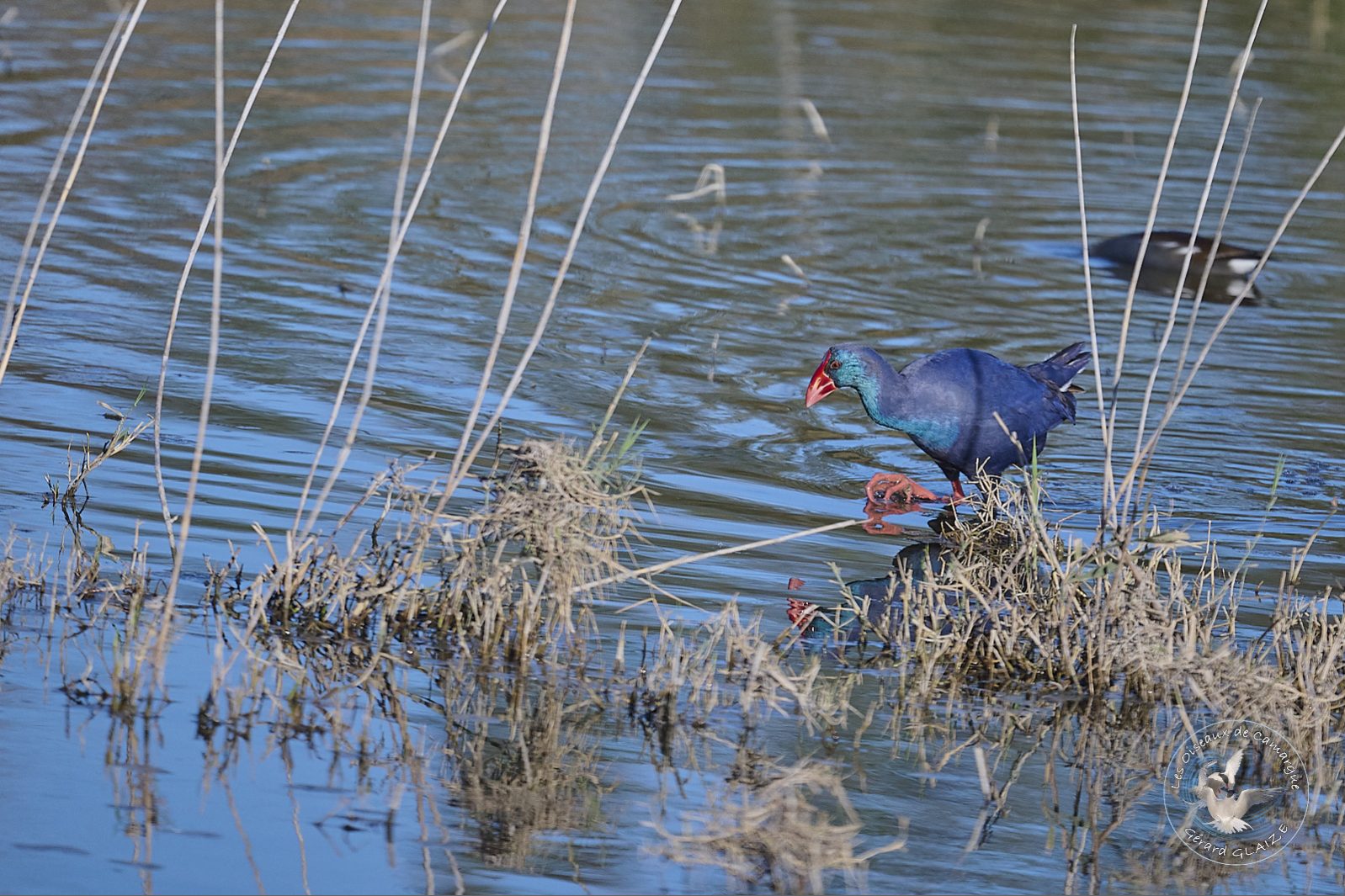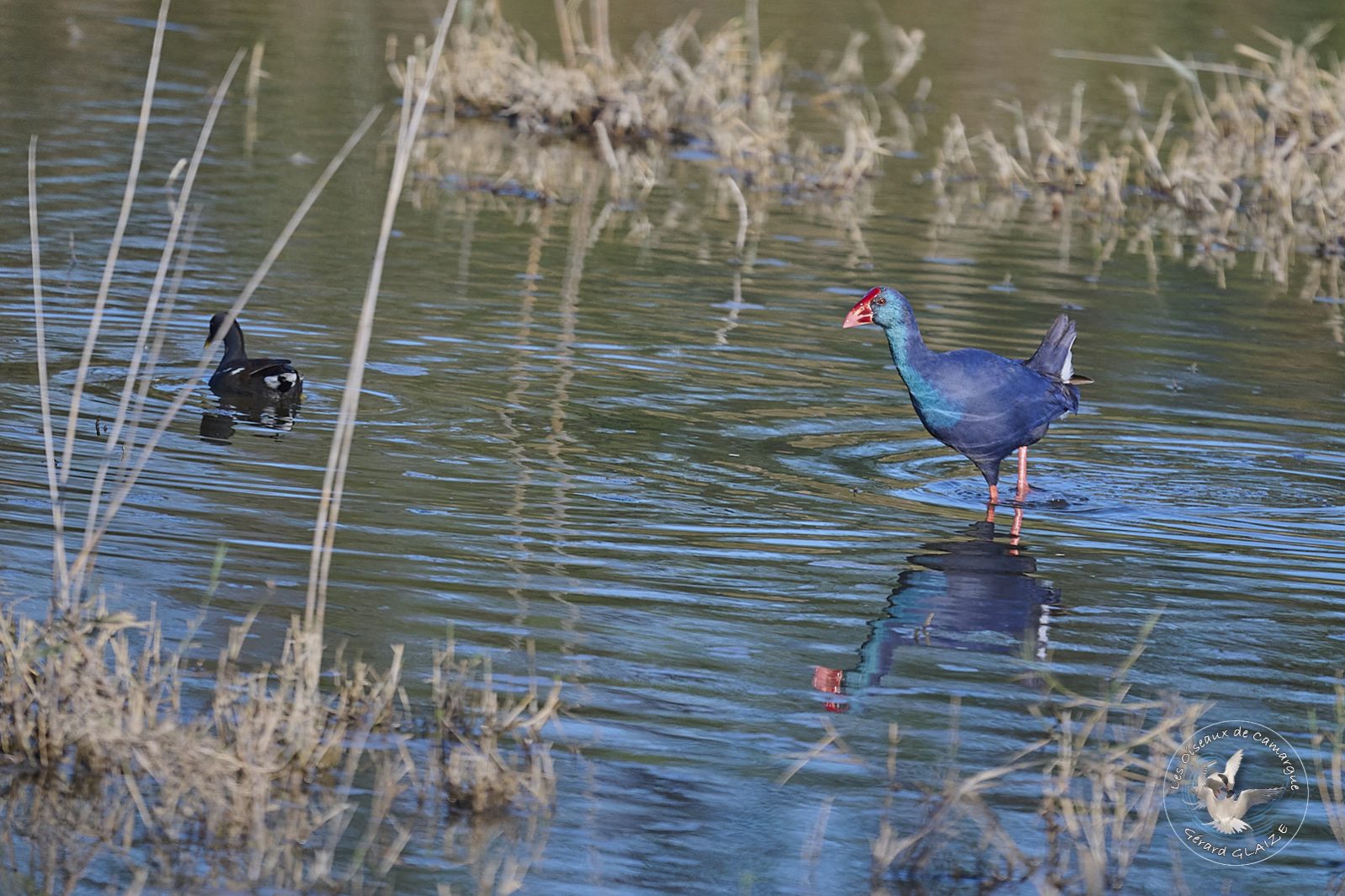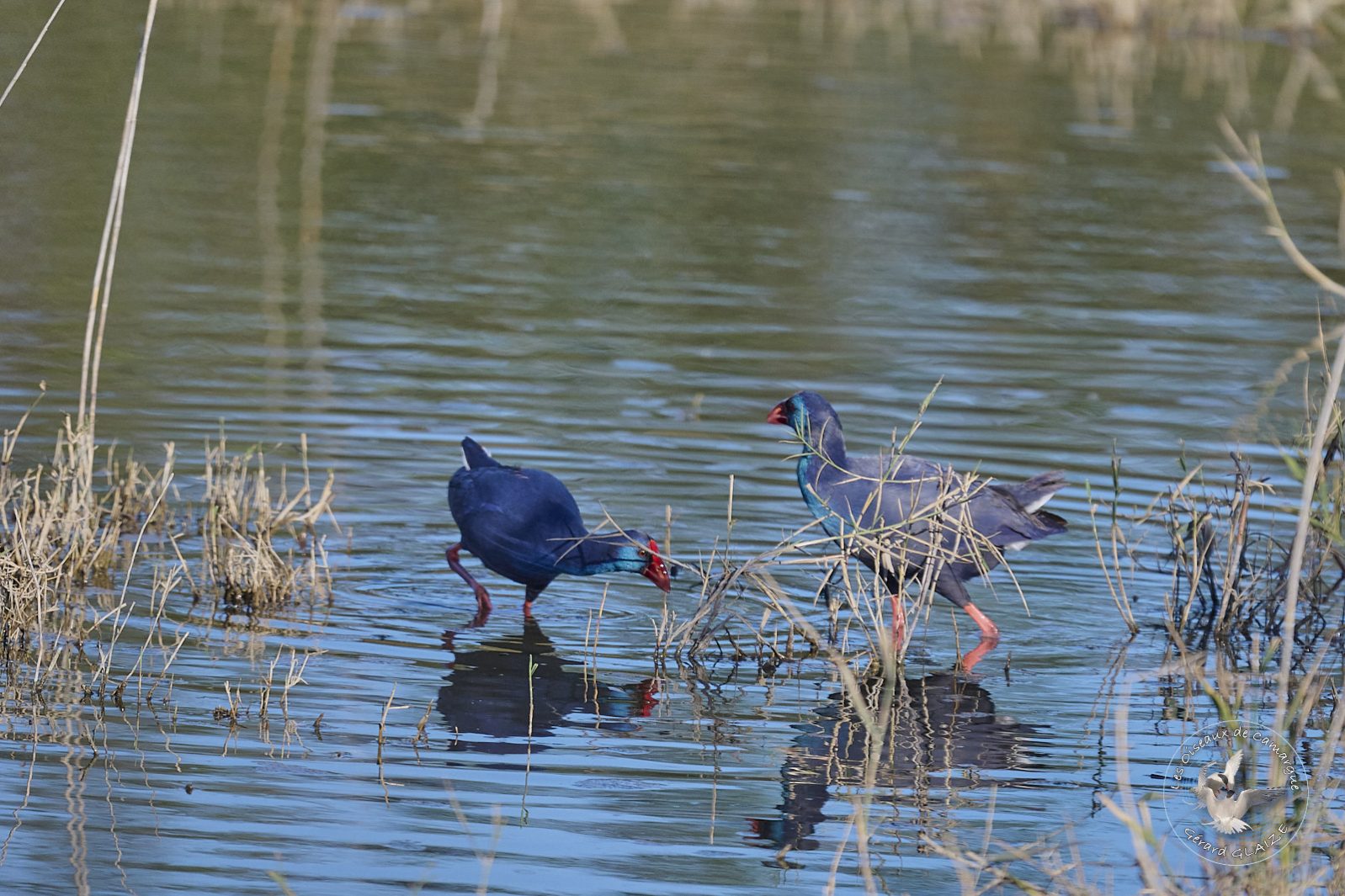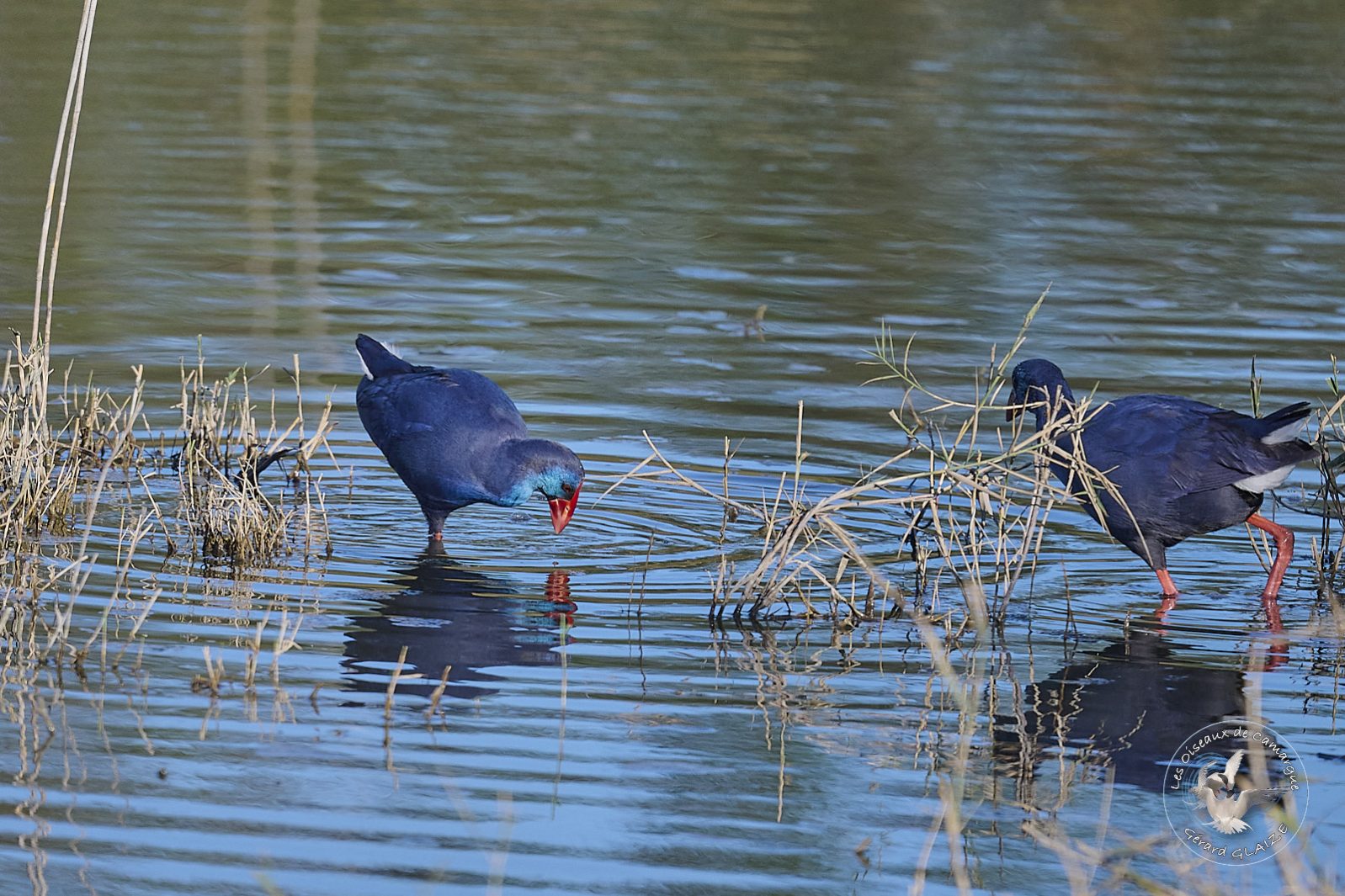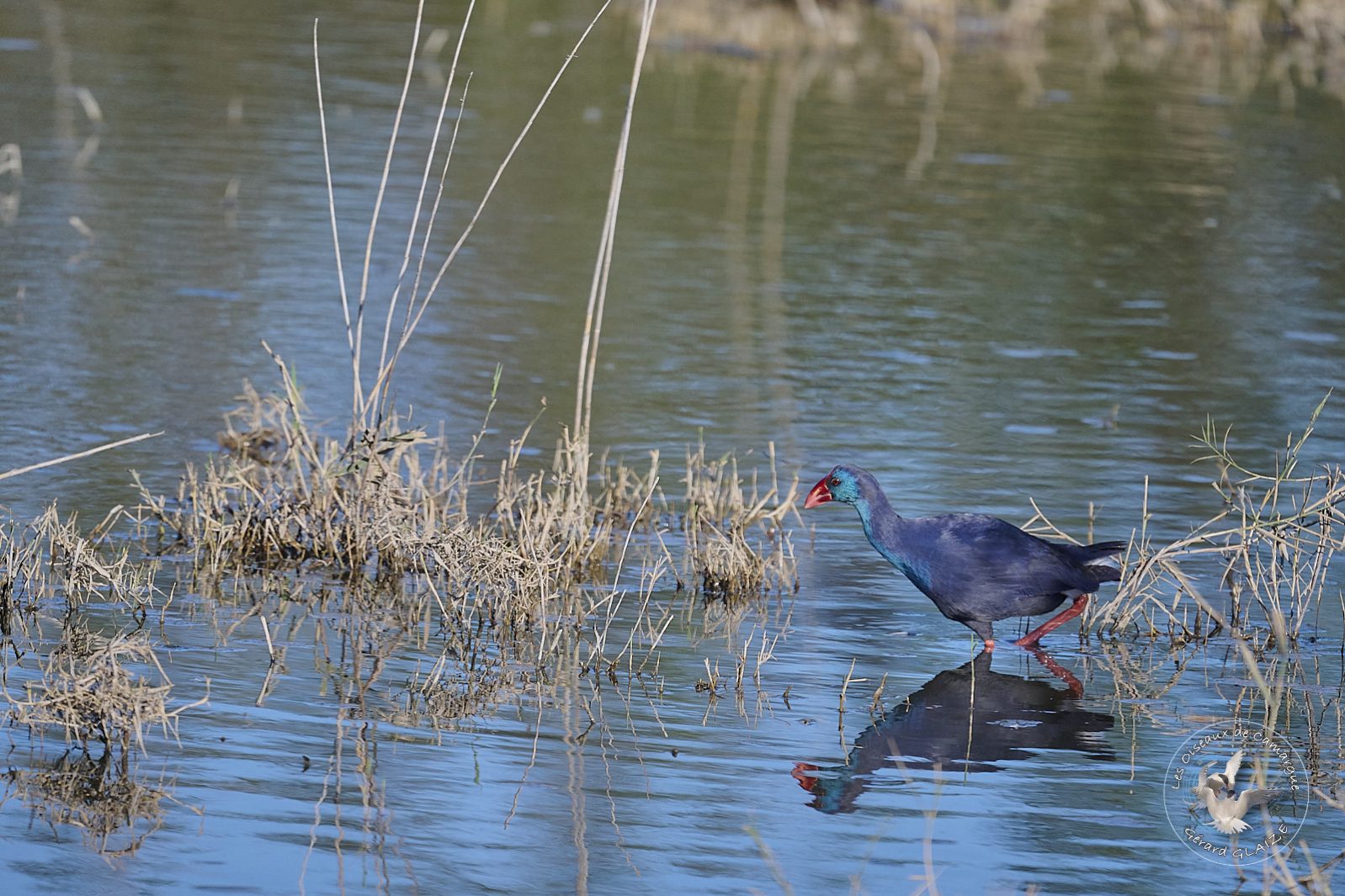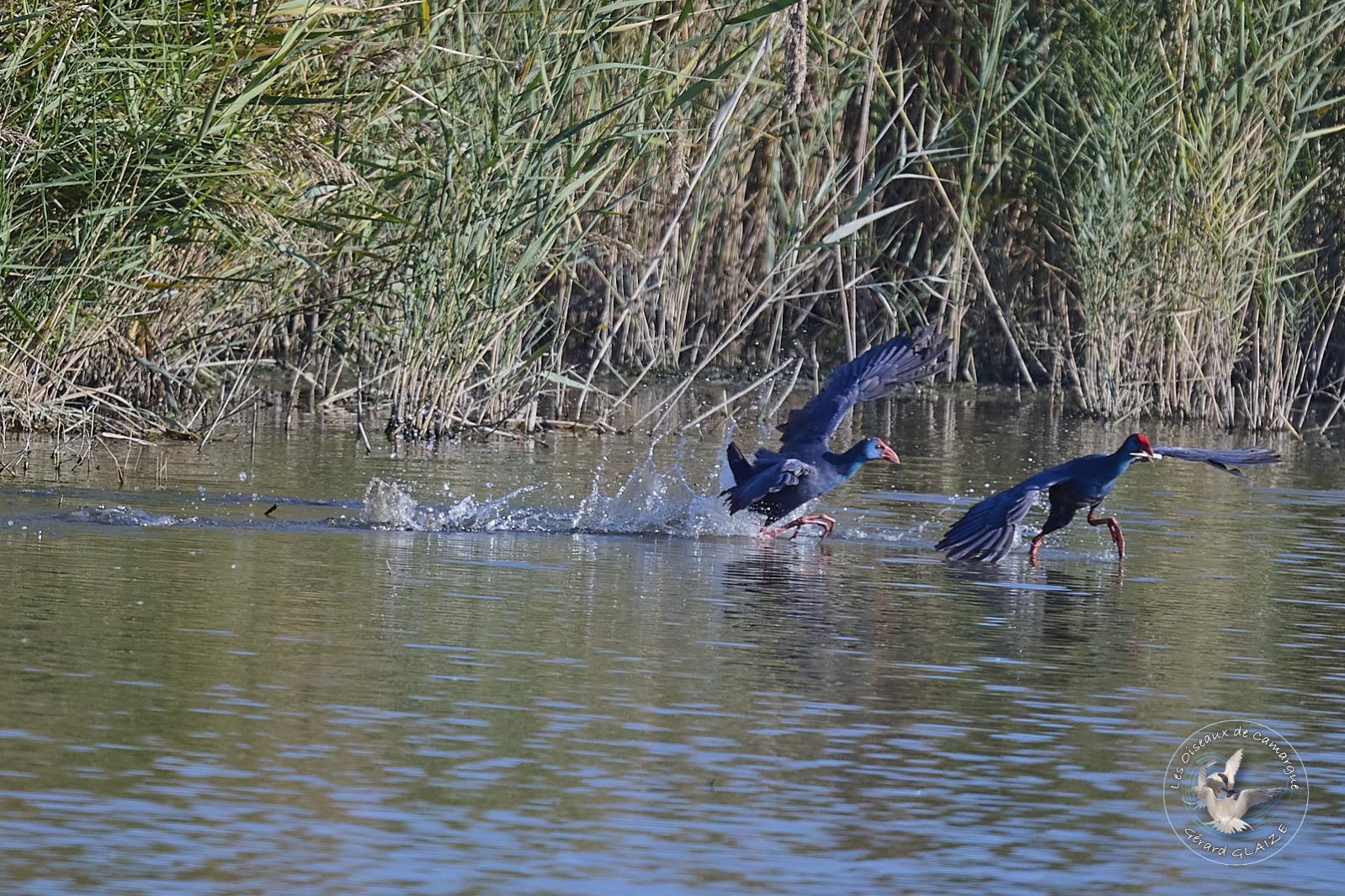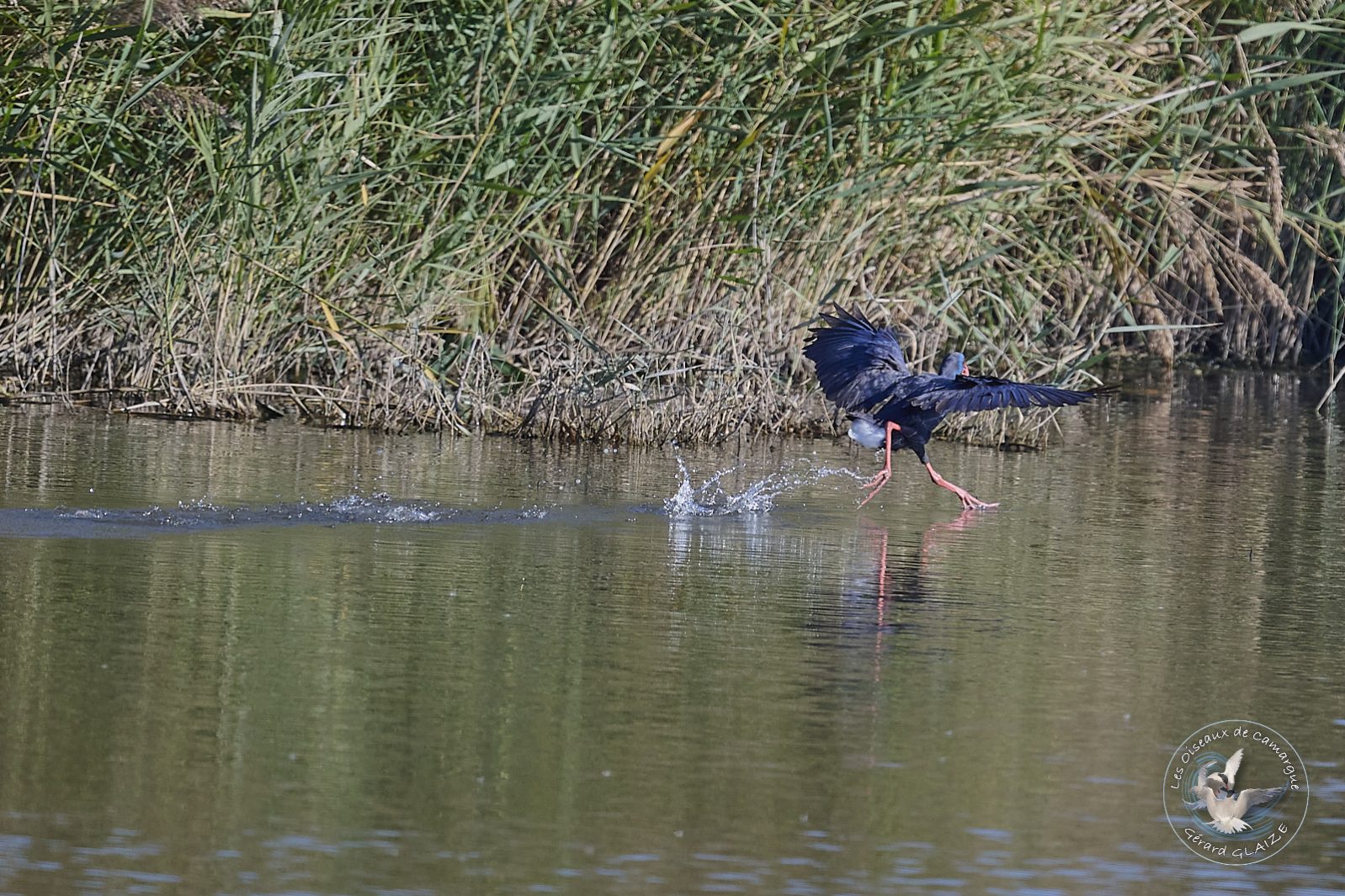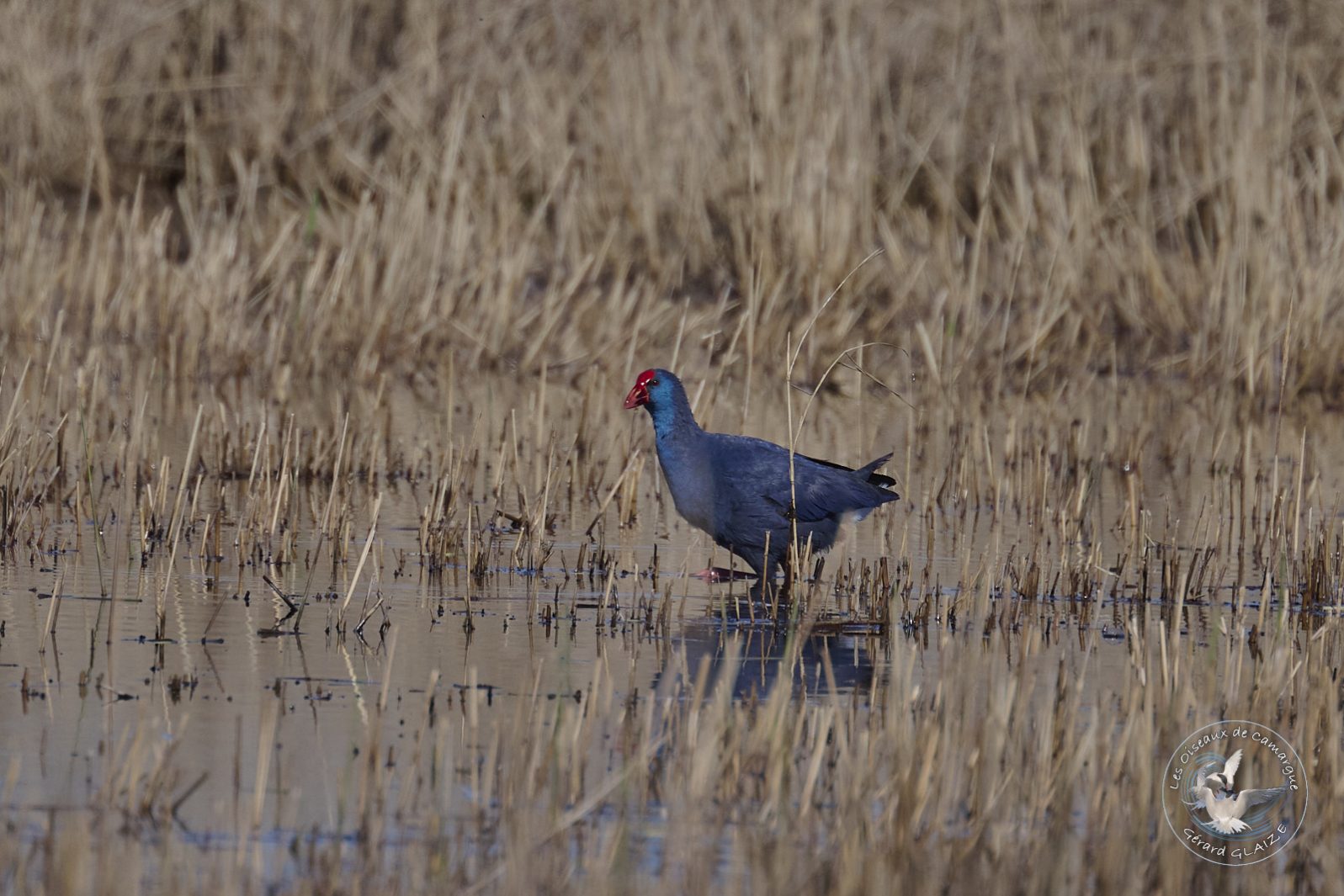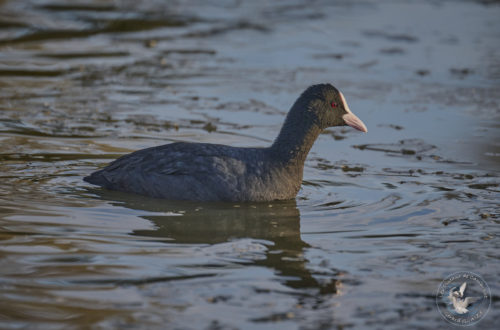Western Swamphen New
Western Swamphen, sometimes called the “Swamphen Chicken,” is the largest rail in France. Its upperparts are dark purplish-blue, while its throat and breast are turquoise. The undertail coverts are pure white (an important characteristic for identification from a distance). It has a massive bill topped with a broad, bright red frontal plate. Its triangular bill, with a large, curved upper mandible, gives it a distinctive appearance. The eyes and legs are also red.
It is larger and more robust than the Eurasian Coot, distinguished by the length of its legs and toes with equally long and slender claws, especially the hind toe. The two sexes are identical.
Western Swamphen
Scientific name : Porphyrio porphyrio
Family : Rallidés
Lenght from 38 to 50 cm – Wingspan from 90 cm to 100 cm
Weight : from 500 gr to 1.500 gr
IUCN Conservation Status : LC
Flight
Western Swamphen flies relatively well; its flight is fast but over short distances. In flight, its long legs hang down, making it easy to identify from afar.
Habitat
Western Swamphen is confined to Mediterranean marshes, ponds, and the banks of waterways with fresh or brackish water and surrounded by vegetation. In the Camargue, reedbeds are its preferred habitat.
Western Swamphen tends to remain hidden in the vegetation, but it sometimes appears at the edge of the reedbeds or the vegetation belt that shelters it.
Regime – Diet
The Western Swamphen is omnivorous. It mainly eats seeds and green leaves, but also insects, small invertebrates, and sometimes bird eggs.
Nesting
Nesting generally begins around March. The nest is built on the water’s surface by the pair, using reed debris, roots, and aquatic plant leaves. It forms a shallow cup. The female lays 4 to 8 pale gray-yellow eggs with brown or purple spots, which are then incubated by both parents for about 22 days. Afterward, both parents feed their offspring, and the young are raised for almost two months until they are completely independent.
Migration
The Western Swamphen is a sedentary bird. Immature birds fly and move around in search of new territories, but it cannot really be called migration.
Protection
Western Swamphen has been fully protected in France since 1976. It is listed in Annex I of the European Union’s Birds Directive. It is sometimes a victim of egg theft and hunting. However, the main threat remains the draining of wetlands for agriculture or urbanization, linked to pollution from insecticides and lead.
Song of Western Swamphen
The cry it makes when it takes flight resembles the sound produced by a small trumpet. It has a rich and varied repertoire consisting of loud clucks and clucks, and soft “tchouk! tchuk!”


